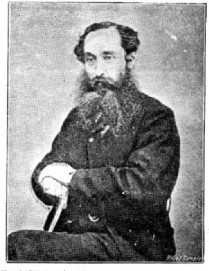Related Research Articles

William Sefton Moorhouse was a British-born New Zealand politician. He was the second Superintendent of Canterbury Province.

The 1866 New Zealand general election was held between 12 February and 6 April to elect 70 MPs to the fourth term of the New Zealand Parliament.

Sir John Cracroft Wilson, also known as Nabob Wilson, was a British-educated civil servant in India, farmer and politician in New Zealand.
John Cathcart Wason, generally known as Cathcart Wason, was a Scottish farmer and politician who served as a Member of Parliament in two countries: first in New Zealand and then in Scotland. He established Barrhill, a model village, and after the failure of this colonial venture, he returned to Scotland. An unusually large man, he is noted both as an innovative farmer and for having passed his time in the British House of Commons by knitting.

Nelson is a New Zealand parliamentary electorate, returning one Member of Parliament to the House of Representatives of New Zealand. From 1853 to 1860, the electorate was called Town of Nelson. From 1860 to 1881, it was City of Nelson. The electorate is the only one that has continuously existed since the 1st Parliament in 1853.
Avon is a former New Zealand parliamentary electorate. It was created for the 1861 general election and existed until 1996. It was represented by 13 Members of Parliament and was held by Independents, Liberal Party or Labour Party representatives.
Waikouaiti was a parliamentary electorate in the Otago region of New Zealand, from 1866 to 1908.
Gladstone was a parliamentary electorate in the Canterbury region of New Zealand, from 1866 to 1890.
Kaiapoi was a rural New Zealand electorate, north of Christchurch in the Canterbury region of New Zealand from 1861 to 1946. It was represented by twelve Members of Parliament.
Wakanui was a rural parliamentary electorate in the south Canterbury region of New Zealand, from 1881 to 1887.

Francis James Garrick, was a barrister and politician from Christchurch, New Zealand.

Henry Sawtell was Mayor of Christchurch 1871–1872.
The 4th New Zealand Parliament was a term of the Parliament of New Zealand.
George Hart was a 19th-century Member of Parliament in the Canterbury region of New Zealand.
John Karslake Karslake was a 19th-century Member of Parliament in the Canterbury region of New Zealand.

Samuel Edward Shrimski was a 19th-century Member of Parliament and then a Member of the Legislative Council from Otago, New Zealand.
Richard Seaward Cantrell was a 19th-century Member of Parliament from Dunedin, New Zealand.
The 5th New Zealand Parliament was a term of the New Zealand Parliament. Elections for this term were held in 68 European electorates between 14 January and 23 February 1871. Elections in the four Māori electorates were held on 1 and 15 January 1871. A total of 78 MPs were elected. Parliament was prorogued in December 1875. During the term of this Parliament, six Ministries were in power.
The 1872 Coleridge by-election was a by-election held on 23 July 1872 in the Coleridge electorate in the Canterbury region of New Zealand during the 5th New Zealand Parliament.
References
- Cyclopedia Company Limited (1903). The Cyclopedia of New Zealand : Canterbury Provincial District. Christchurch.
{{cite book}}: CS1 maint: location missing publisher (link) - Scholefield, Guy (1925) [First ed. published 1913]. New Zealand Parliamentary Record (2nd ed.). Wellington: Govt. Printer.
- Wilson, James Oakley (1985) [First ed. published 1913]. New Zealand Parliamentary Record, 1840–1984 (4th ed.). Wellington: V.R. Ward, Govt. Printer. OCLC 154283103.